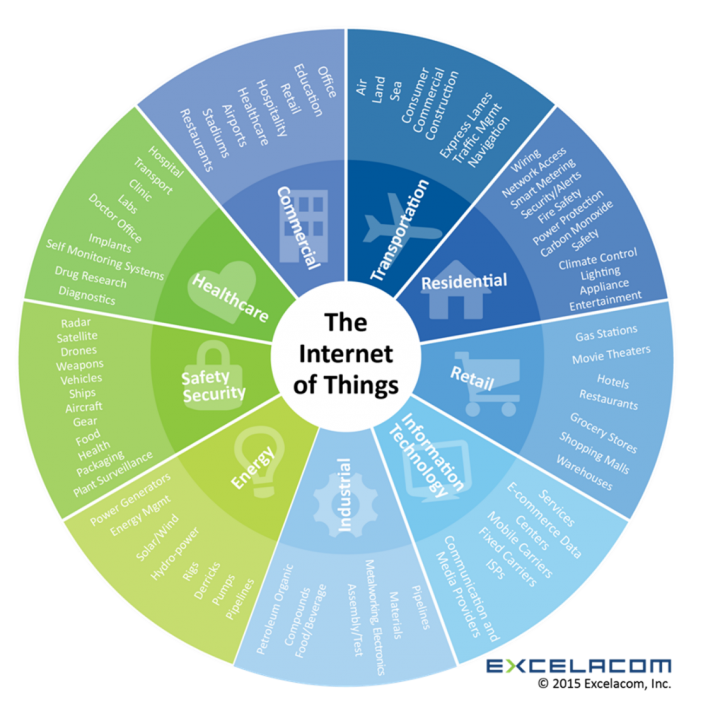Blogs
IoT
Ever been worried about your home or a loved one when you're not around? We all have. In today's rapidly transforming digital world, you can remotely monitor and manage what matters most: home appliances, family, your front door, air quality levels, health and wellness— almost anything you want.
All this is possible because of the Internet of Things (IoT). IoT is defined as a system of interrelated, virtually connected devices that are capable of collecting and exchanging data over a network without any human-computer interaction.
We are seeing IoT adoption in numerous industries throughout the world. IoT is our future. It has the opportunity to significantly enhance the lives of consumers, in addition to providing an additional stream of revenue for businesses around the world. In fact, Gartner predicts IoT will generate revenues exceeding $300 billion by 2020! Communication and Media providers are in the center, driving this connectivity. Therefore, it is crucial for providers to invest now, enable new services across various industries and build partnerships that help minimize the risk and test innovations.
Connectivity is the underpinning of the Internet of Things (IoT) ecosystem, a market that Gartner predicts will generate large revenues. Since providers run the ecosystem for IoT connectivity, they have a huge opportunity to be in the driver's seat by tapping into a number of markets to significantly increase revenues. With solid partnerships and an effective IoT strategy, providers can own and monetize these ecosystems. To do so is not an easy process and it won't deliver quick results. Service providers face a number of business, operations and technical challenges to find success in the IoT.
Providers can overcome all three of these overarching challenges by partnering with a proven IoT expert and capitalizing on Big Data and IoT analytics. This is a multi-billion dollar market opportunity for providers and the world is relying on service providers to light the way. They are in a strategic position and it's their time to shine.
So where is the market boom expected to come from? There are nine key industries that are incorporating IoT where service providers have big opportunities.

Over the last few years, homeowners have been making the transition to home automation so they can constantly monitor and manage their home. IoT helps homeowners manage their appliances, thermostats, lighting, entertainment, safety and more. These "smart homes" are helping homeowners become more efficient and informed, ultimately saving money on monthly household bills and keeping an eye on pets and family.
Retailers are constantly being challenged to improve their customer experience. IoT can help retailers more quickly and efficiently satisfy and meet the growing needs of their customers.
Many of the top IT companies have already started investing heavily in IoT. These companies are building the infrastructure and developing systems that will allow them to support IoT expansion to better serve their customers.
Large enterprises are incorporating IoT into their operational and supply chain processes to help manage quality assurance, inventory, increase efficiency and reduce costs.
For many years, energy consumption and reducing our carbon footprint has been an area of concern. We (individuals, businesses, cities, etc.) take it for granted and often times don't realized when energy is wasted. IoT can help us take advantage of developing technologies to provide details on how much energy we are consuming and find ways to save it.
As for the future of safety security, IoT is playing a significant role. It is helping law enforcement and officials better protect, watch and remain informed. It also helps homeowners watch their home by monitoring and sending alerts. On the other hand, as more and more devices become connected to the Internet, there becomes a crucial need for cloud-based security services to protect our personal information as we become more digitalized.
Both doctors and patients can experience the benefits of the IoT. Connected products, mobile apps, wearable devices and more, allowing patients and doctors to measure, monitor and track health conditions in real-time. This also can save a significant amount of time and money because now health can be monitored in the convenience of one's own home and moves to a more proactive instead of reactive model.
Soon consumers will start to see every type of business incorporate the IoT. Everything will be digital and customer journeys and experiences will be significantly improved. On the back end, businesses will utilize the IoT to help cut costs, increase efficiency and monitor operational processes.
Cars, trucks busses, etc. will all be connected in the near future and some have already started. Next, these methods of transportation may even become "driverless." IoT in the transportation industry will help reduce the number of car accidents and help save energy. In addition, it can help businesses better and more efficiently track and manage their drivers, as well as maintenance and repairs.
It's a no-brainer: with 20.8 billion connected devices by 2020 and 5.5 million new things being connected each day, it is time for service providers to get ahead of the curve ( Gartner). With so many industries expanding the impact IoT devices have and leveraging them to enhance their businesses it's clear that IoT isn't going away and will be a large part of the future. Partnering with a proven IoT expert and capitalizing on analytics will help communications providers take advantage of developing technologies to improve their bottom line and compete for a piece of the IoT pie. A proactive approach to preparing the infrastructure for the future technologies of IoT will ensure readiness to take advantage of this huge new market.
For more information on how to overcome the challenges of IoT and experience its benefits, please email us at marketing@excelacom.com.